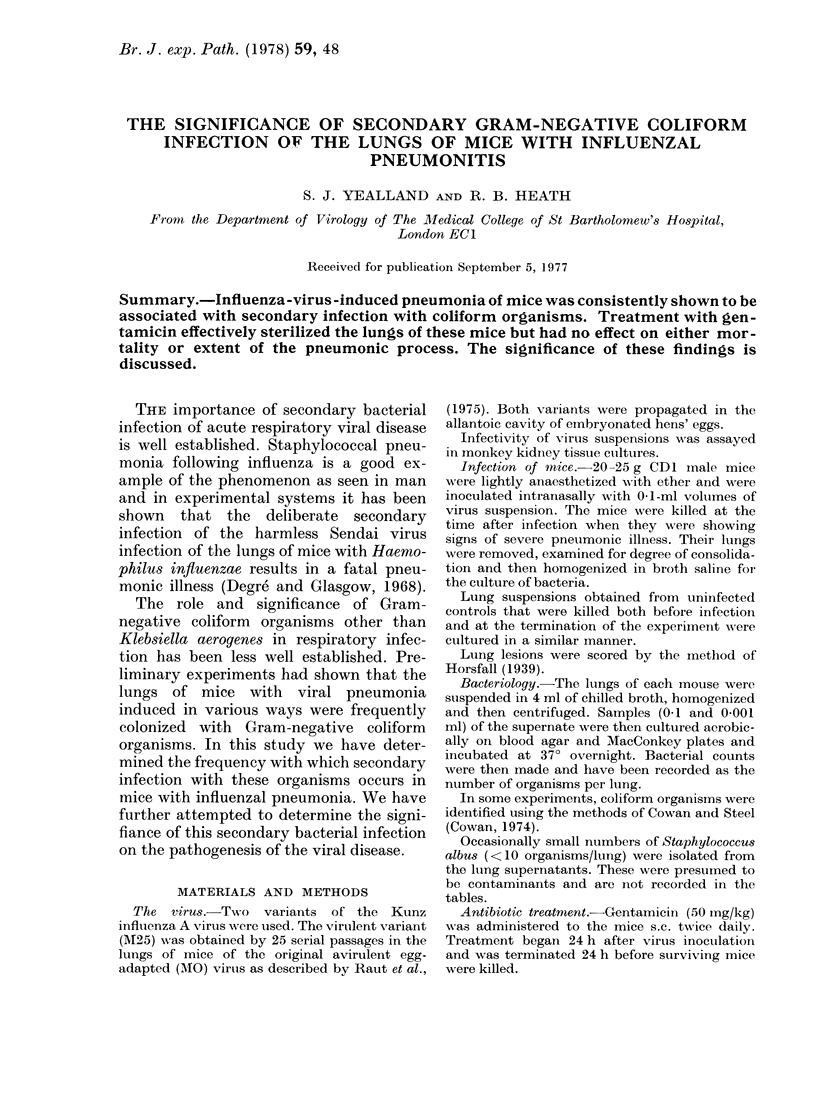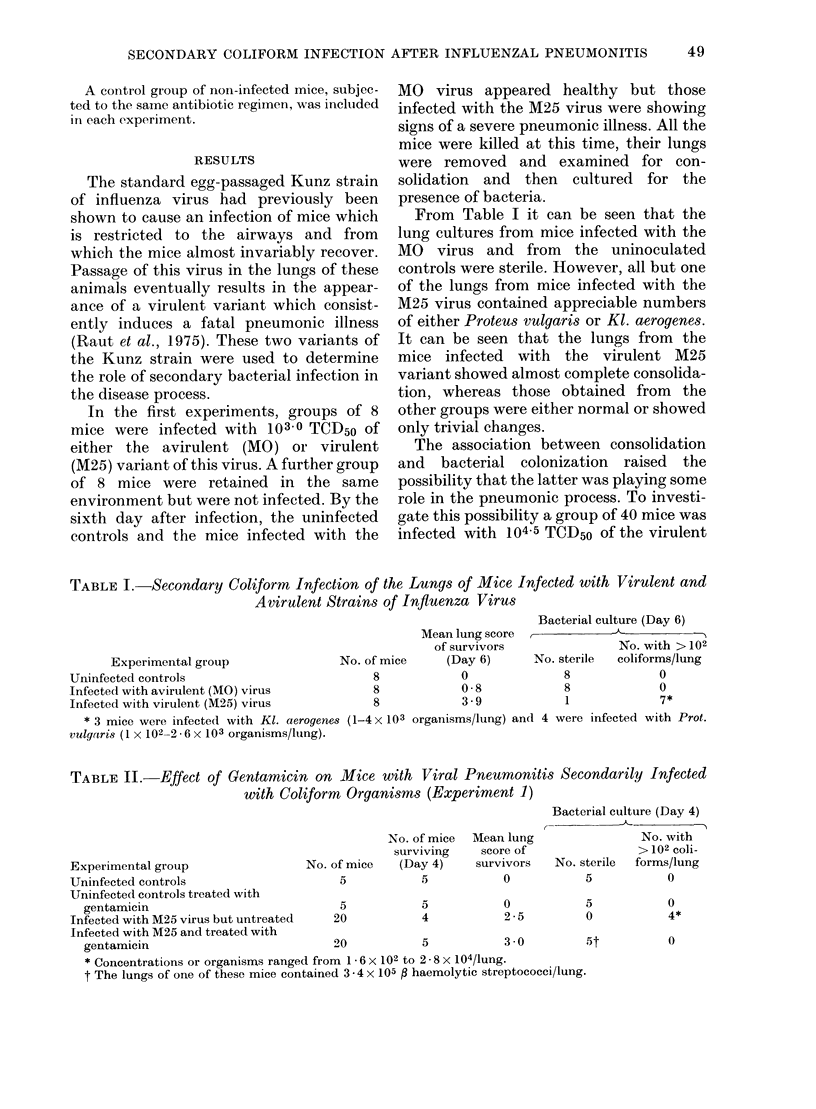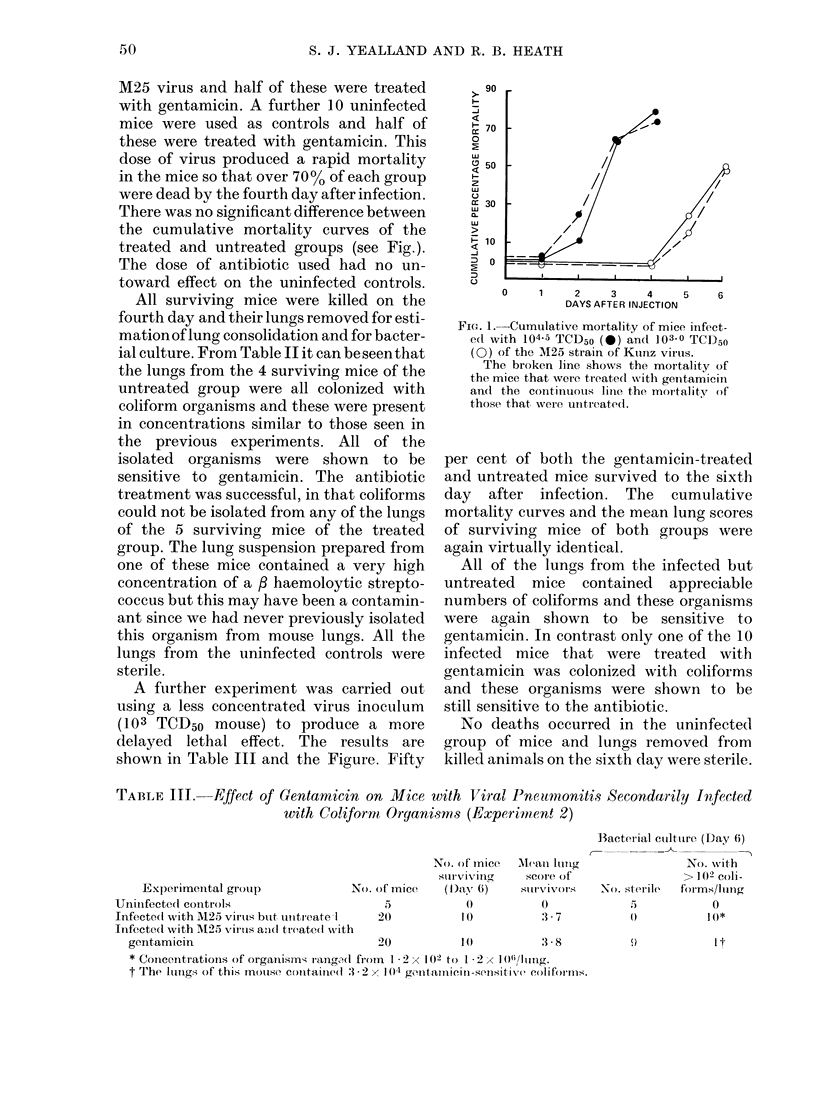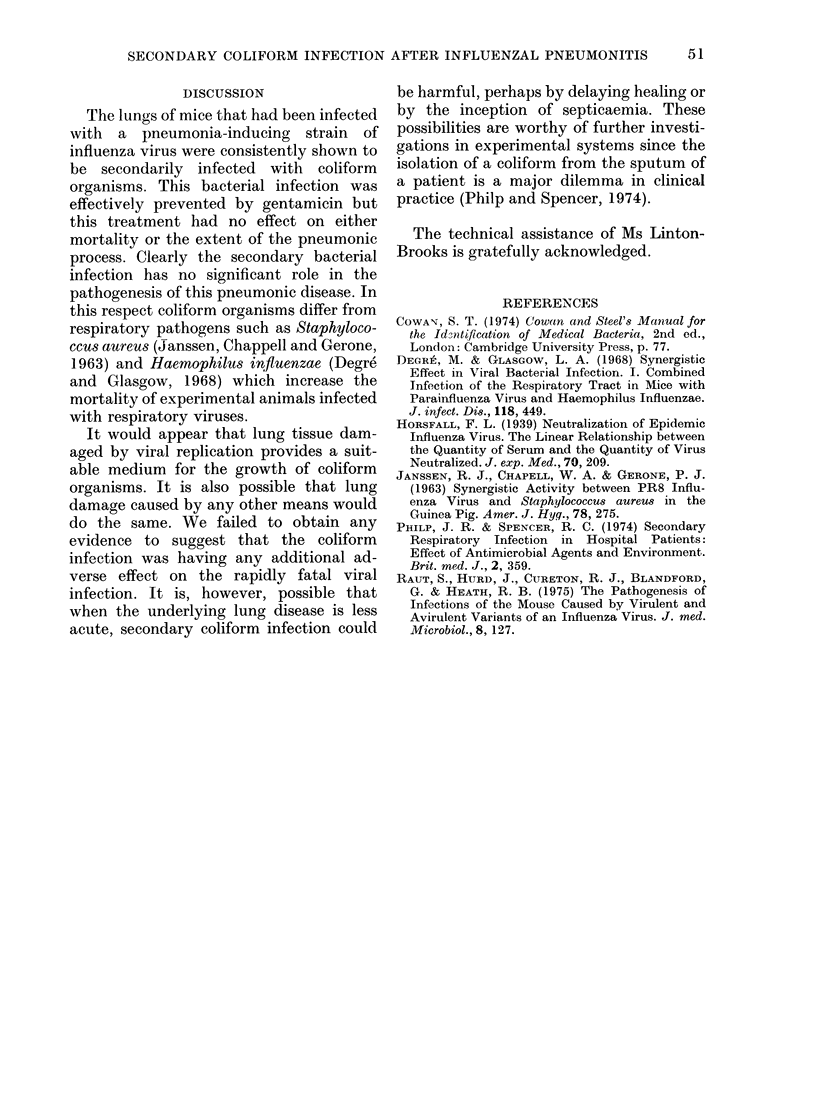Abstract
Influenza-virus-induced pneumonia of mice was consistently shown to be associated with secondary infection with coliform organisms. Treatment with gentamicin effectively sterilized the lungs of these mice but had no effect on either mortality or extent of the pneumonic process. The significance of these findings is discussed.
Full text
PDF



Selected References
These references are in PubMed. This may not be the complete list of references from this article.
- Degré M., Glasgow L. A. Synergistic effect in viral-bacterial infection. I. Combined infection of the respiratory tract in mice with parainfluenza virus and Hemophilus influenza. J Infect Dis. 1968 Dec;118(5):449–462. doi: 10.1093/infdis/118.5.449. [DOI] [PubMed] [Google Scholar]
- JANSSEN R. J., CHAPPELL W. A., GERONE P. J. SYNERGISTIC ACTIVITY BETWEEN PR8 INFLUENZA VIRUS AND STAPHYLOCOCCUS AUREUS IN THE GUINEA PIG. Am J Hyg. 1963 Nov;78:275–284. [PubMed] [Google Scholar]
- Philp J. R., Spencer R. C. Secondary respiratory infection in hospital patients: effect of antimicrobial agents and environment. Br Med J. 1974 May 18;2(5915):359–362. doi: 10.1136/bmj.2.5915.359. [DOI] [PMC free article] [PubMed] [Google Scholar]
- Raut S., Hurd J., Blandford G., Heath R. B., Cureton R. J. The pathogenesis of infections of the mouse caused by virulent and avirulent variants of an influenza virus. J Med Microbiol. 1975 Feb;8(1):127–136. doi: 10.1099/00222615-8-1-127. [DOI] [PubMed] [Google Scholar]


